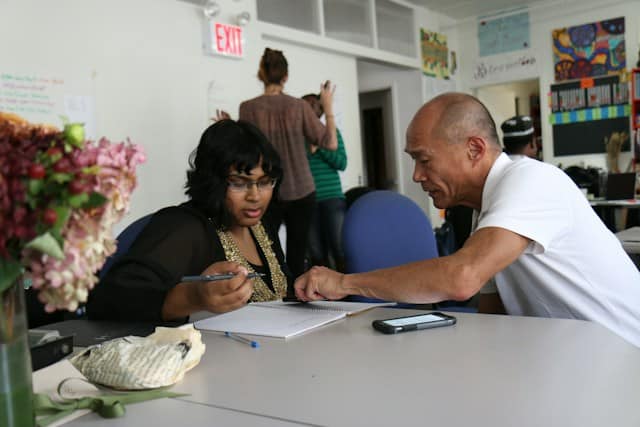In today’s disconnected world, age groups often remain secluded from one another, with older adults isolated in seniors’ homes and children ensconced in their schools or digital realms. One innovative solution to bridge this gap is intergenerational programs, which bring together these disparate generations for mutual benefits. As adults, children, and seniors interact, they foster a sense of community and harmony. This article delves into the myriad health and social benefits associated with such programs.
The Concept of Intergenerational Programs
Intergenerational programs are initiatives designed to promote interaction between older adults and younger generations. These programs typically involve activities encouraging dialogue, learning opportunities, and shared experiences, facilitating increased understanding and empathy between different age groups.
Dans le meme genre : What are the best natural ways to boost libido?
These programs are not a novel concept. They have a rich historical precedent, with traditional societies often emphasizing the value of intergenerational relationships. In the contemporary digital age, however, these connections have been severely weakened, and it is here that such programs find their relevance and importance.
A diverse array of programs exists, with some focusing on physical activities, others on intellectual pursuits, and yet others on purely social engagements. For instance, the Google Generation 50+ program, a scholar-backed initiative, focuses on teaching seniors tech skills, fostering intergenerational dialogue in the process.
A lire aussi : What are the benefits of cold showers for your immune system?
Health Benefits of Intergenerational Programs
Intergenerational programs are not just about social connections; they also offer substantial health benefits for both older adults and children. According to a meta-analysis of several studies on Pubmed, the positive impact of these programs on health outcomes is undeniable.
For seniors, regular interaction with younger generations can significantly improve their physical and mental health. It gives them a renewed sense of purpose, keeps them mentally stimulated, and encourages physical activity, all of which contribute to better health outcomes. Moreover, these interactions can reduce feelings of loneliness and isolation, common issues in older adults, which are linked to various health problems.
Children and young people also gain from these programs. Engaging with older adults provides them with unique perspectives, enriches their emotional intelligence, and promotes healthy attitudes towards aging. Such experiences can help young individuals manage stress and anxiety, contributing to their overall mental health.
Social Benefits of Intergenerational Programs
The social benefits of intergenerational programs are equally significant. They help build a cohesive community by fostering understanding and respect between generations, reducing age-related prejudices and stereotypes.
Seniors often feel marginalized in today’s fast-paced, technology-driven world. Intergenerational programs effectively address this issue by providing older adults with opportunities to interact with younger people, sharing their wisdom and experiences, and learning new skills in return.
Young people, on the other hand, gain a greater appreciation for the knowledge and life experiences of older adults, realizing the value of the often neglected elderly segment of the population. They learn patience, empathy, and respect, essential traits for thriving in a diverse community.
Strengthening Communities through Intergenerational Programs
Intergenerational programs do more than just connect individuals; they strengthen entire communities. By promoting mutual respect and understanding, they foster a sense of unity and cohesion, essential for any thriving community.
When young and old come together, they create a dynamic, vibrant community. Older adults, with their wealth of experience, act as mentors and guides. In return, they get the chance to learn from the younger generation, staying connected with the evolving world.
These programs also enable the sharing of resources. Seniors can offer their time and wisdom, while young people can provide technological assistance or physical help. Such mutual support systems strengthen community ties, resulting in a more resilient, harmonious society.
The Future of Intergenerational Programs
The future of intergenerational programs looks promising. As society grapples with the challenges of aging populations and disconnected communities, these programs present a compelling solution by bridging the generation gap and fostering a sense of community.
There is an increasing recognition of the benefits of these programs. From policy makers to healthcare providers and educators, there is growing interest in promoting intergenerational activities. Moreover, technology is expanding the reach of such programs, with digital platforms enabling virtual interactions.
Despite the challenges, the potential of intergenerational programs is immense. As these programs continue to evolve, they will play an increasingly important role in promoting health, building resilient communities, and fostering an inclusive society that values and benefits from the contributions of all its members.
Building Successful Intergenerational Programs
In order to reap the maximum benefits of intergenerational programs, it is crucial to design and implement these initiatives effectively. Successful programs typically have a clear mission statement, defining their specific objectives and target groups. They are also flexible, adapting to the needs and interests of both the older and younger participants.
Successful programs also have well-defined activities that facilitate meaningful interactions between generations. For instance, a program might involve children interviewing older adults about their life experiences, while another could involve seniors teaching young people traditional crafts or cooking methods. These activities not only engage participants but also provide a platform for the exchange of knowledge and skills.
Sustainability is another key factor for successful intergenerational programs. This could involve securing long-term funding, ensuring volunteer commitment, and building strong partnerships with local community organizations. Programs also need to constantly evaluate their impact and adapt their strategies as needed.
Above all, successful intergenerational programs have a culture of respect and empathy. They value the contributions of both young and old, celebrating the unique strengths of each generation. They foster an environment where everyone feels heard and appreciated, thus promoting a strong sense of community belonging.
Conclusion: Embracing Intergenerational Programs for a Better Future
In conclusion, intergenerational programs offer a wealth of health and social benefits, promoting both individual well-being and community cohesion. They address two pressing issues of our time – the isolation of the elderly and the disconnection of young people – by fostering understanding and empathy between generations.
Intergenerational programs are not just about bringing older adults and children together; they are about nurturing a sense of community, breaking down age-related barriers, and leveraging the unique strengths of each generation. These programs represent a powerful tool for social change, one that can help us build a more inclusive, resilient, and harmonious society.
The future of intergenerational programs is indeed promising. As we continue to grapple with the challenges of an aging population and disconnected communities, these programs offer a beacon of hope. They remind us that each generation has its unique wisdom to share and that together, we are stronger.
Let’s embrace intergenerational programs, for they hold the key to a better future – a future where every member of the community, young or old, feels valued, connected, and empowered.











